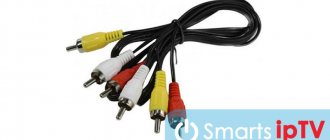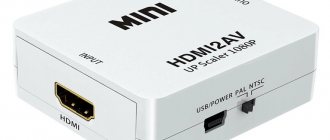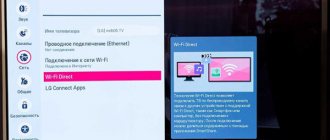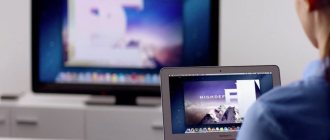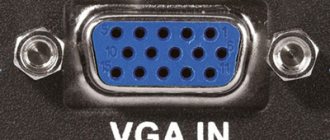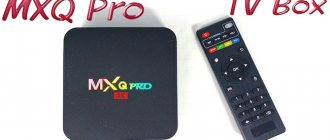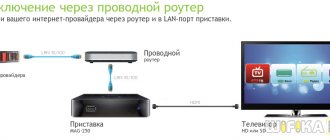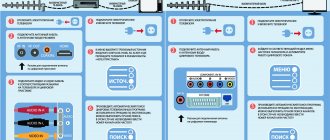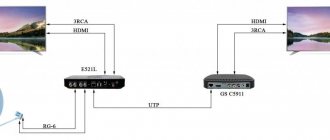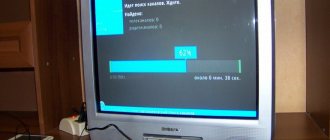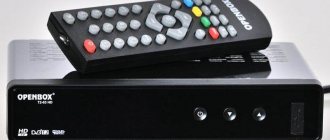The development of technology does not stand still - this is reflected in all spheres of human life. Television broadcasting in digital mode is gaining more and more popularity, users are abandoning the analogue signal. But not many people know what is needed for this, resorting to the help of specialists. Let's take a closer look at how to connect digital television yourself.
Receiver selection
When selecting a digital TV receiver, first of all you will need to decide on the planned types of viewing digital television. They are divided:
- Broadcasting - for this it is enough to purchase the simplest set-top box. If your TV has a digital signal reception function, you can do without a set-top box.
- Cable TV - in this case, you will need to determine how the signal is transmitted in a particular region. In most cases, operators use DVB-C and IPTV standards. Accordingly, receivers should be purchased in accordance with the specified standards.
- Satellite TV - here you need a receiver that reads the reception signal from the corresponding satellite.
A little about digital set-top boxes
A digital TV set-top box is a rectangular or square device to which an antenna is connected. The set-top box, in turn, is connected to the TV using a cable. Thus, the set-top box (tuner, decoder) acts as an intermediary on the signal path from the antenna to the TV. It converts the digital signal into a regular one, which the TV can already recognize.
A set-top box is a small device that converts a digital signal from an antenna so that the TV can recognize it
The price of the device is low - you can buy a high-quality model for 1000 rubles. When purchasing, pay attention to the characteristics of the device - it should be marked DVB-T2.
How to understand broadcast standards
To gain access to digital TV, you must have certain knowledge of broadcast standards. This knowledge will be especially relevant when planning to purchase a new TV. They will save money on purchasing additional devices for receiving a digital signal.
For digital broadcasting, the DVB standard is used, which was developed by an international company. Due to the fact that digital signal transmission occurs at various frequencies using various modulations, a decision was made to separate the broadcasting standards. The following standards are currently used:
- DVB-T (T2) is intended for broadcasting. This concept means the ability to receive a digital signal on a standard television antenna. When choosing a TV, you must take into account its ability to receive the broadcast standard in question.
- DVB-C (C2) is used to play digital cable channels. Various providers provide the ability to watch digital television using a special access card.
- DVB-S (S2) is used for broadcasting digital satellite television. The presence of this function on the TV will allow you to do without purchasing a satellite dish.
What is a 20 channel set-top box?
In 2021, analogue television will be completely switched off in the Russian Federation. It is being replaced by modern digital television. To find TV channels in the new format on your TV, the TV receiver must have a built-in digital tuner. Today it is installed on all modern television panels.
If the TV screen is old or the tuner is broken, the user can purchase a digital receiver, connect it and tune in the same 20 channels as through the built-in receiver.
The price of such a device is low, they are sold everywhere, and connecting to a TV and setting up is very easy. The user can do it independently, unlike setting up satellite television from Tricolor TV or another provider, where, even knowing how to update TV Continent or another service provider, it is better to entrust this operation to specialists. In addition to receivers, digital TV setup is available for smart set-top boxes with a built-in DVB-T2 tuner. In addition to showing television, such devices provide the user with Internet access for watching online movies, surfing and other entertainment.
What you need to connect digital TV
To gain access to digital television you will need to incur small financial expenses. If you are using a new TV model, the costs will be minimal. You only need to purchase an antenna.
When using a TV without built-in digital signal receivers, you will need to purchase additional equipment:
- TV tuner;
- antenna;
- connecting cables.
Tuner
It is the main link in gaining access to digital TV. It is designed to decode the signal received from a TV tower. The device has a fairly simple usage scheme. Control is carried out via a remote control.
There are main functional buttons on the front of the tuner. They can be used with a variety of TV models. The main condition is that the latter have specialized connectors: Video IN and EURO, HDMI and component.
The first two allow you to receive a digital signal, but the output image will be identical to the analog image. Then, using HDMI and the component connector produces an image in HD quality.
How to connect a digital set-top box to your TV
Before connecting any devices via wires, unplug all equipment. After this, connect the cable that comes from the antenna to the RF IN connector on the set-top box.
Insert the cable from the antenna into the RF IN connector
Now connect the set-top box to the TV. For communication you can use one of three cables:
- HDMI. Suitable for more modern TVs with the same output. This wire will provide the maximum picture quality that digital TV is capable of.
- Cable “tulip” with three plugs. Used most often in the case of outdated TVs. The quality here is not the same as with HDMI, but if you have a small display on your TV, the difference will not be too noticeable. Connecting the cable is easy: the color of the plug matches the color of the round slot. Yellow is used for video signal, white is for audio input signal, and red is for audio output signal.
The set-top box can be connected to the TV using a “tulip” (RCA) or HDMI
- Coaxial wire. This method should only be used if the previous two exits are missing. The set-top box is connected to the TV using an antenna cable. To do this, you need to connect the cable to the RF Out slot on the set-top box. The image quality will be very poor in this case, unfortunately.
After connecting the devices, connect the TV and set-top box to the mains and turn them on. Now you can proceed to the channel search itself.
Antenna selection and installation
To receive a high-quality digital signal, you will definitely need to use an antenna. When making a choice, the natural preference will be an indoor antenna. But this option is not suitable for everyone. This is due to the presence of a weak signal from the TV tower, which is not able to pass through the barriers created in the form of walls.
The most suitable option would be to use an outdoor antenna. This will allow you to get high-quality image and sound. There are two types of outdoor antennas: passive and active. The latter provide for the installation of an additional amplifier for the received signal.
They are important to use when there is a significant distance between the TV and the antenna. If the length of the connecting cable is short enough, then a passive antenna will suffice.
How to determine the location of a TV tower
The most rational option would be to use Internet resources. To do this, you will need to find a digital TV coverage map on the Internet. Then, by the name of the locality, determine the range of the nearest television tower.
Reliable reception area
It represents the path from the transmitting to the receiving antenna, which runs in a straight line. At the same time, reliable signal reception is considered to be the receipt of a high-quality digital image, regardless of weather conditions and time of day.
Cables and accessories
To connect a TV tuner you will need a cable. As a rule, the device comes with a cable with a plug connection. Its use allows you to obtain images exclusively in analog format. To view high quality images, you will need to purchase an HDMI cable. This will allow you to watch TV shows in HD quality.
You will also need to purchase a coaxial cable to connect the antenna to the tuner. In this case, you will first need to measure the required cable length.
Possible problems with no signal
Options for problems and ways to solve them when a weak signal level is received have already been discussed above. Therefore, only the reasons for the lack of television will be considered here if the level of the recorded signal is satisfactory (from 55%). After completing all connection and configuration steps, the user can receive:
The following results:
- Everything works successfully, shows 20 channels. The setup was completed successfully.
- Shows 10 channels. You need to go to the website map.rtrs.rf and find RTRS-1 and RTRS-2 repeaters within a radius of 50 km from the area. If there is only one, at the moment the 1st multiplex (10 channels) is broadcasting in the area and it will not be possible to connect 20 channels. If both are present, then they are in different directions and you need to use a flat or spatial antenna. For unidirectional devices, the reception coverage of the boom does not exceed 135°.
- Shows all channels, artifacts pop up. Incorrect signal decoding due to loss of part of the packet data. The repeater is far away, you need to connect an antenna with a long boom.
- All channels work well, but the delay is more than 10 seconds. If you are using a Smart TV and this is the case with all channels, you need to synchronize the device to accurately adjust the time. If the delay is only on some programs, or the cable cannot cope with processing incoming information, you will need to connect a more powerful wire.
- No image. When registering a clear signal, this situation is only possible when the receiver is turned on. You need to check whether the wires are connected correctly or using an unsuitable receiver. You need to make sure that it supports VMI-T2 (DVB-T is also not suitable, these are completely different digital standards that have nothing in common except broadcasting).
Connection process and setup
Connecting and setting up digital television directly depends on the type of TV used. If you are using an older model, you will need a specialized tuner. In new models, the device for searching digital signals is built directly into the TV. This means there is no need to purchase additional equipment. Next, we will take a closer look at the connection diagram and settings for each option.
Connecting Smart TV
If you have a Smart TV, the process of creating a digital television connection diagram is very simple. To do this, you will need to connect the antenna output to the corresponding socket on the TV. In this case, you can use both an outdoor and indoor antenna. Signal reception will depend on the location of the TV tower.
If the antenna provides for the installation of a signal reception amplifier, then you will need to plug the power supply into an outlet. This completes the process of connecting digital television to a Smart TV. All that remains is to configure the digital broadcast channel.
Connecting the tuner
The procedure for connecting a tuner is carried out in several stages:
- First you need to insert the HDMI cable or plugs into the corresponding jack on the tuner. They are located on the back of the device.
- The mating parts of the cable will need to be connected to the corresponding connectors on the TV. They are also located on the back side. When connecting the so-called tulips, you need to be guided by the applied color markings.
- The output from the antenna is connected to the tuner.
- Electrical power is supplied to the TV tuner through a special unit that is plugged into an outlet.
- Turn on the device using the remote control or the button on its front side, depending on the design of the tuner.
- Select the appropriate section on the TV to watch via the tuner. In most cases, this is AV1.
This completes the process of connecting the tuner.
Setting up channels
Channel tuning is done in various ways, depending on the digital signal search scheme used. If your TV has a digital channel recognition feature, you will need to use the TV menu. In it, find the channel search section and select the auto search function. You can also use manual setting mode.
If the reception of a digital signal is carried out using a set-top box, then you should use its menu. As a rule, it appears after the console is turned on. In it, as in the previous case, you will be asked to choose the method of tuning channels: manual or automatic. The last option is the most convenient and simple.
Auto search
To tune channels in automatic mode, you must select the appropriate function in the set-top box menu. Upon its launch, there will be a search of available broadcast frequencies of digital channels. In this case, not a single channel may be present for quite a long time. This is due to the fact that digital TV channels can be located within the same frequency range.
The end of the auto search is accompanied by a corresponding inscription. In most cases, the channels will be saved automatically, but some set-top boxes require manual saving of the found channels.
Before starting automatic tuning, you need to cancel the search for analogue channels. This is done by unchecking the corresponding item.
It should be borne in mind that in some regions of the country not all channels are found in digital format. Therefore, you can leave the search on an analog channel to be able to watch additional TV programs.
Manual mode
This method may be required if any problems arise with the automatic search. To use manual mode, you will need to select the manual scanning function in the digital receiver menu. The user will need to independently enter the broadcast data of nearby TV towers.
Connecting two or more TVs to one set-top box
It is technically possible to connect several TVs to one set-top box.
But this method will be accompanied by the inconvenience of watching TV shows. The signal from the set-top box is transmitted simultaneously to all used TVs, which is accompanied by the ability to watch only the same channel. To be able to watch various TV programs on connected TVs, you will need to additionally purchase a high-frequency modulator. Its cost is quite high compared to a conventional digital receiver. To connect several TVs through one set-top box, you will need to use the HDMI channel for one, and the second is connected via plugs, the so-called tulips.
Installation on TV
Smart TV has a special menu for custom settings. But during installation, it is necessary to take into account the TV model, as well as the region where the person lives.
Smart TVs have a built-in store where you can purchase applications for watching IPTV.
On other TVs, you need to download the software separately. For any of these actions, you need to connect to the Internet in any possible way and watch your favorite programs.
If the flash drive has pre-downloaded software, then you should insert the device into the appropriate port and download the program to the TV. After carrying out the operation and installing the program on the TV, which is no different from any applications on a personal computer, you need to go to the menu. Depending on the TV model, these steps may differ slightly, but there are general instructions.
How to watch TV via the Internet:
- After installing the application from the store, you need to create an account and activate it by clicking on the link via email. To do this you need to use a computer or mobile phone.
- After creating a recording, you need to go to your personal account on the TV and study all the necessary parameters.
What channels are available for viewing?
When connecting on-air digital broadcasting, the user will have access to twenty channels, as well as three radio stations. Broadcasting is provided free of charge. At the same time, the list of channels includes: NTV, Karusel, Channel One and Channel Five, MATCH, TNT, MUZ TV and others. The available TV channels can satisfy the TV viewing needs of different age groups.
If you use cable or satellite equipment to watch TV, you will need to pay an additional fee for the selected channel package.
Why use the Internet to watch television?
Most Smart TVs are connected to local digital TV (Samsung, Philips and other popular modern models). This is the most optimal technology for watching TV channels in high quality Full HD. But with a TV device you can watch not only standard channels or subscriptions. You can use Internet content.
Using the capabilities of modern television is much easier and more convenient on a big screen than on a computer with Windows and other applications that will take a long time to set up. In the case of Internet television, the stream enters the apartment via an Internet cable. Technically, using the capabilities of the provider, you can watch TV via the Internet, having an unlimited number of channels in the best resolution.
Using different subscriptions, you can use different types of services:
- turn on the TV program to be aware of the start time of your favorite show or movie;
- view announcements of films and programs.
Internet television is a technology with real-time feedback. Now the user using the TV can not just look at the monitor. This type of communication system is very different from analog, cable and even satellite TV.
You can do the following:
- use services and options without interrupting the broadcast;
- write messages;
- use video calling.
Connection options through a provider
For connoisseurs of quality content, IP television services are provided by large Internet resource providers. They are paid. Each company has its own principle of connecting IPTV without a set-top box.
Rostelecom
Since 2021, clients of the provider Rostelecom have the opportunity to watch interactive TV without a set-top box. This service is called Wink. Using the program, you can subscribe to a package of 5,000 films, TV series and cartoons, as well as 200 of the best TV channels. Payment - once a month.
The special feature of the application is the ability to independently collect a subscription from exclusively necessary and interesting channels. This tariff is called “Transformer”.
The Wink application is available on the following TVs (without set-top box):
- Apple TV version no lower than 10.0;
- LG Smart TV with WebOS 3.0 or higher;
- Samsung Smart TVs released no earlier than 2013.
On Android TV, the application is currently only available using a set-top box.
Connecting Wink using the example of a Samsung TV:
- Go to the official Samsung App store.
- Enter the name of the Wink application into the search or find it by searching in the “Popular” section.
- Click on the application card, then click on the “Install” button that appears. Wait until the download completes.
After these steps, they begin to subscribe. Standard channels (“First”, “Russia 1”, “NTV”, etc.) are available immediately - they are free.
Convex
To watch IPTV from Convex on a TV with SMART-TV, you will need to install a special IPTVPORTAL application.
Instructions for connecting IPTV from Convex:
- Go to your TV receiver's application store (LG Content Store, Apps Market, etc.).
- Enter “IPTVPORTAL” in the search. Click on the application card that appears.
- Click the “Install” button to complete the process.
- Login to the application. Go through authorization by entering the login and password specified in the agreement with the provider in the special fields.
The channels provided by the tariff plan become available.
Advantages of digital television
- Quality. This is one of the key advantages of digital for the average user. The image of analog television can be called soapy and inappropriate for modern television equipment. Today, a TV can broadcast a picture in 2k, 4k or even 8k. Digital television supports HD quality. Moreover, there is potential for growth.
- Larger number of available channels. Given the features of the technology, which can be compared to Internet access today, the service provider can simultaneously send more channels to the user. Separate broadcasting of video and audio signals plays a significant role in this.
- Functionality. Now you can pause the broadcast or record it using a timer.
Briefly, the advantages of digital broadcasting can be defined as follows:
- increased image quality and clarity;
- Availability of HD format;
- simultaneous broadcast of more channels;
- the ability to watch programs in any available language;
- blocking unwanted content;
- expanded functionality (pause, record, view past broadcasts);
- wide selection of free multiplexes.

